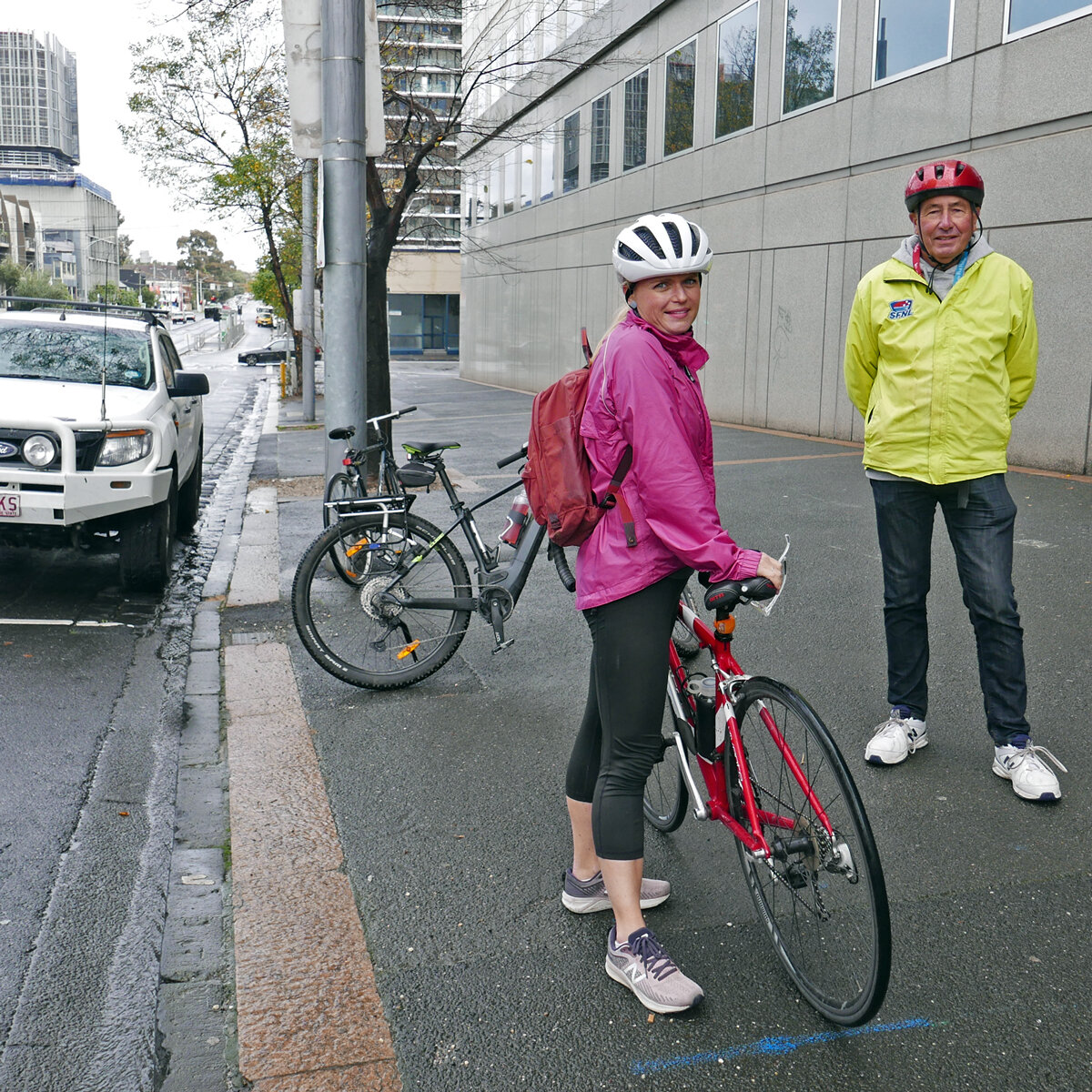On the 11th May, the BUG took new Port Phillip Councillors Heather Cunsolo and Peter Martin for a ride of Gateway Ward. Or maybe they took us—- they are both at home on their bikes!
BUG members Julie and Pierre with councillors Heather Cunsolo and Peter Martin
Our first stop was the notorious bus stop near the Sandridge Lifesaving Club. This is smack in the middle of the shared path, and the large advertising posters block views of the oncoming bikes and pedestrians, as well as people waiting at the bus stop. We’ve been raising this issue since 2019. In 2020 Councillor Pearl raised it in Council, to which the General Manager replied “"if there is a bus stop that’s causing any safety issues we will report that to the Department of Transport"—- it’s not clear if that’s happened. Our Councillors indulged us by illustrating the safety issues involved.
Next stop, the planned Garden City route. This is one of the protected bike routes from the Integrated Transport Strategy, joining Beacon Rd with Garden City Reserve and then on to the Sandridge Trail via Swallow St. The planned route will include a bidirectional trail on the west side of Beacon Rd and improved crossings on Swallow St. It’s not clear how it will deal with the roundabout between Beacon Rd and the Boulevard.
At the roundabout
Next stop, the Sandridge Trail. There is still no safe crossing on Bridge St (pictured below), but the new signalised crossing on Ingles St is a big improvement.
No safe crossing of Bridge St
There was some good news though—- at the tram depot, the Sandridge Trail was closed for works. Apparently the flooding issue (raised repeatedly by BUG members, and also identified in the BikeSpot project) is being addressed, and the notorious yellow railing chicanes are being replaced. The proposed designs look like they’ll be a much better fit for people with trailers, long bikes, or wide bikes.
Finally over to Moray St, and Park St, where Council and State Government plan to build protected bike lanes. Between St Kilda Rd and Kingsway, a planned major renovation of the road will include protected lanes. Between Kingsway and the roundabout, Council will put in temporary protected bike lanes. It’s not clear what the final layout will be.
Thanks to Heather and Peter for coming out on a damp and windy morning, we wish you well for your term on Council.









